Guacamole Airplane is an innovative design studio based in South San Francisco. Together, Ian Montgomery and Tom Kochtitzky design and experiment with sustainable packaging. They have worked on a wide range of projects; from compostable take-out packaging, estimate cards printed with soy-based inks and embedded with wildflower seeds, to wall shingles made from the waste plastic of laundromats. Their work combines sustainability with futurism and is a blueprint for the future of package design!
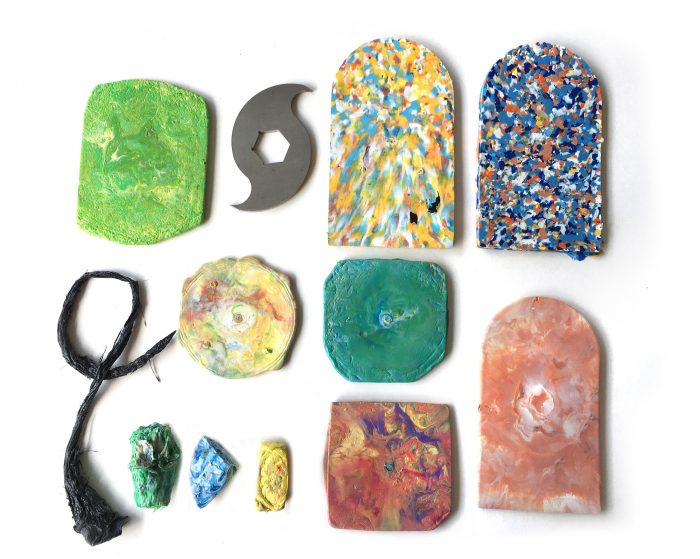
Recycled plastic creations from a demo with students at George Washington High School in San Francisco
1. First off, tell us a little bit about yourselves! What are your backgrounds and how did your prior experiences lead to the formation of Guacamole Airplane?
Ian Montgomery: I come from an environmental science background and worked as a designer for the better part of a decade.
Tom Kochtitzky: My passion for sustainability started in my childhood. I have a background in social justice leadership and grew up in a house with urban chickens, reclaimed lumber, and a thriving compost pile.
IM: Tom and I met in the metal shop at Pratt where we had a great time building these strange Mad Max-esque plastic recycling machines. He’s an expansive thinker and a talented fabricator, so when I set up the studio, he was the first person that came to mind to help out. Today we work with businesses to make their packaging more sustainable. We have a unique hands-on knowledge of materials and manufacturing, and we can prototype just about anything in our shop in South San Francisco. We also put on community workshops and spend quite of bit of time experimenting with fabrications to inform our design process.
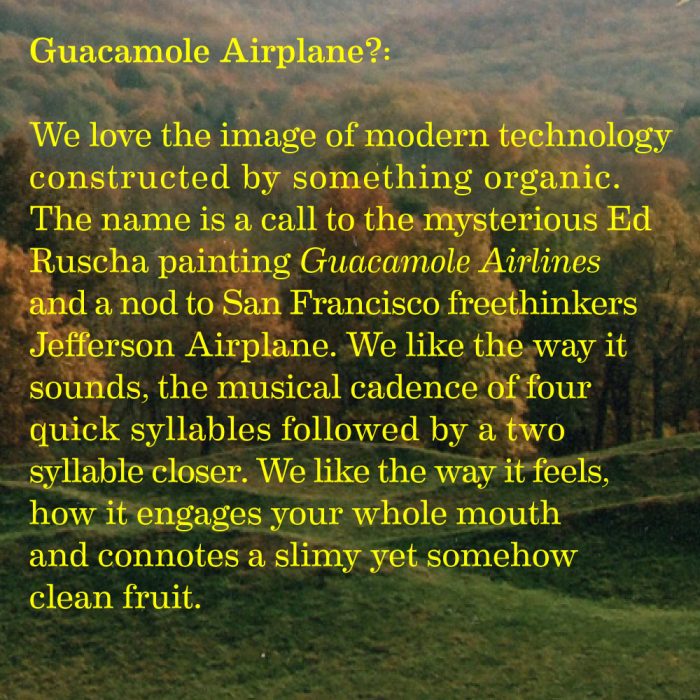
Story behind the name “Guacamole Airplane”
3. Does your work focus more on a lower carbon footprint or on creating a product that’s recyclable or compostable?
IM: There’s no one right answer to that question. Designing for recyclability or compostability is important, but it’s far from an end-all for us. As we speak, plastic recycling in the US has been completely upended by China’s National Sword Policy. We have all this plastic that’s technically recyclable and we have nowhere to send it. Domestic composting is in a slightly better spot, but it’s still contained to more progressive cities. Composting and recycling programs represent a good option for most materials, but they are energy-intensive and full of systemic flaws.
A low carbon footprint can be an alluring metric to design towards, but we found that if we focused only on that, our designs would end up optimizing for a fundamentally broken system. It takes less energy to produce and ship a thin plastic bag than most other packaging, but only because of the trillions of dollars of investment that have gone into refining the petroleum to make plastic bags. Rather than optimizing for a broken system, we’re more interested in laying the pragmatic groundwork for more fundamentally sound material streams.

Plastic shredder built by Guacamole Airplane using plans from Precious Plastic
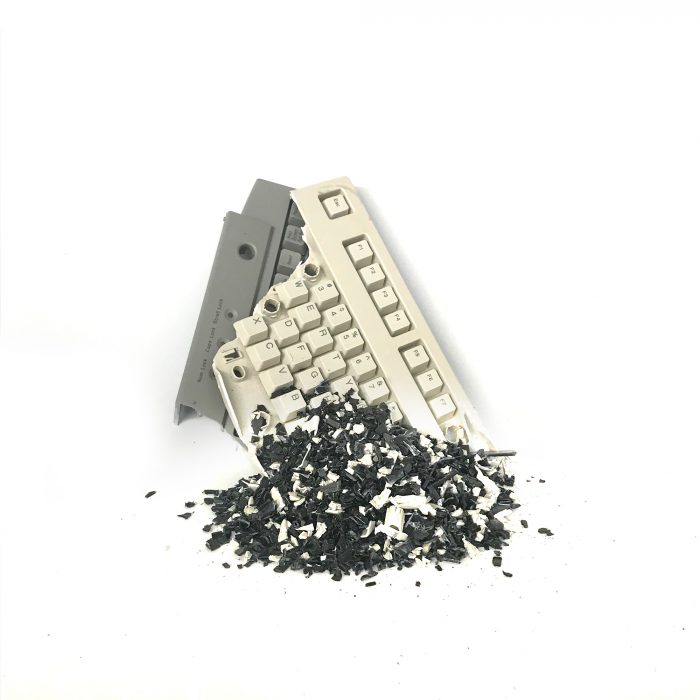
Wall tiles made from recycled keyboards. 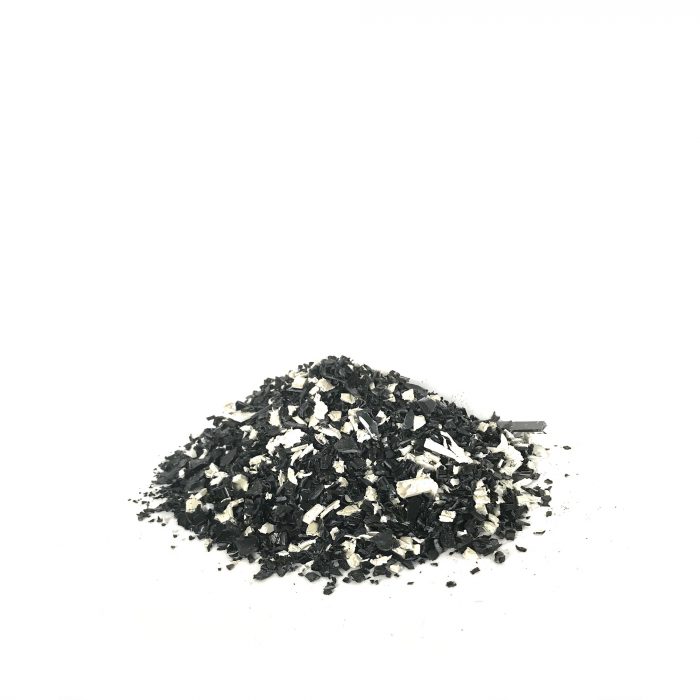
Wall tiles made from recycled keyboards. 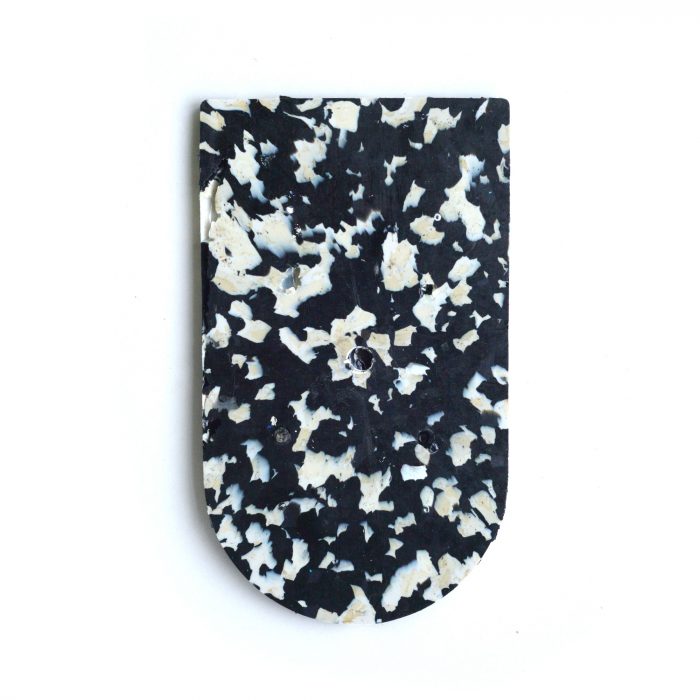
Wall tiles made from recycled keyboards.
4. Sustainability can be such a difficult concept to define. What is the meaning of that word for Guacamole Airplane?
IM: For the first three years of the studio, we’ve chosen to define a sustainable material as one where the material’s growth, life cycle, and decomposition all takes place on relatively similar time scales. For example, there’s a harmony between a molded pulp package made from agricultural waste that takes three months to grow, sits on a shelf for three months, and then composts in three months. A fossil fuel-based plastic that takes millions of years to form, gets extruded into a plastic bag that’s used for 15 minutes, and then sticks around in a landfill for 1,000 years doesn’t make as much sense. We suspect that this way of aligning materials with their life cycle is the best way to focus our efforts on material streams grounded on a more sustainable footing, which means that they will only become more efficient and cost-effective as they scale.
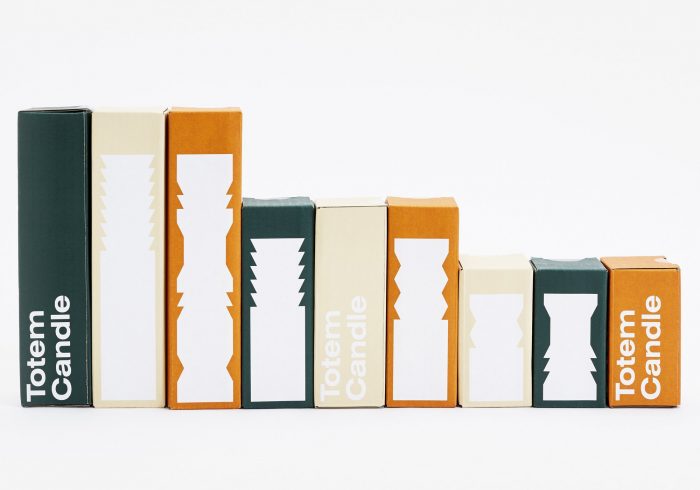
Packaging design for Areaware’s Totem Candles
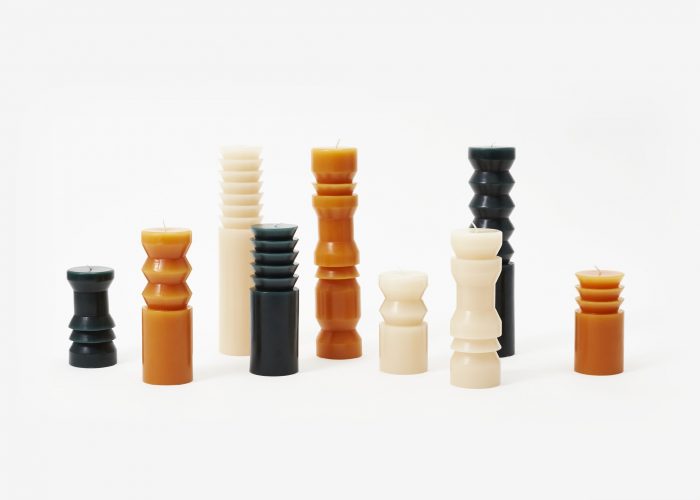
Areware’s Totem Candles
5. Your work is a mixture of bright and colorful patterns with clean designs. What role does aesthetic play in helping shape the sustainability movement?
TK: Aesthetics and good design are necessary for sustainability to reach the masses. We’ve been thinking a lot about aesthetics in the tiles we’re making from old plastic packaging. Due to the single-use and cheap nature of our plastic consumption, we’ve grown to see plastic products as something easy to replace and, therefore, easy to discard. Changing the narrative by using plastic as an attractive material is an attempt to help us realize the true value of the plastic in our daily lives.
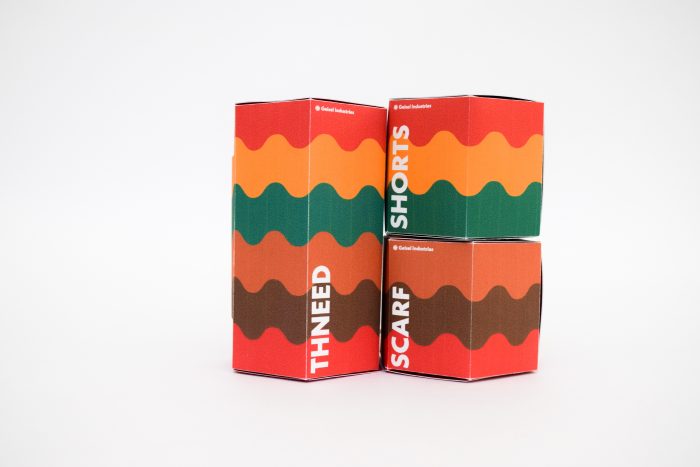
Packaging design for the Thneed, a spoof take on consumerism in the clothing industry based on Dr. Seuss’ “The Lorax”
6. One of your latest projects is called “Compostmodern Take-Out Packaging,” and it aims to combine the tradition of composting with the modern expectation of single-use packaging. Does this practice of using old traditions to solve new problems play a large part in your work?
IM: Absolutely. For that project, we collaborated closely with two wonderful designers from Bangkok, Thitipol Chaimattayompol and Pandara Chanyatanavut. They had both grown up in Thailand using banana leaves as packaging for take-out food. They really opened our minds to the idea that fast food wasn’t a modern product of the plastic age, but instead a more timeless concept that could be approached with thoughtful design. The end result was a collage of sustainable materials designed into this really beautiful terraced modular system. We presented a prototype at New York Design Week last year and now we’re working towards building out the concept into something we can share with a few pilot restaurants.
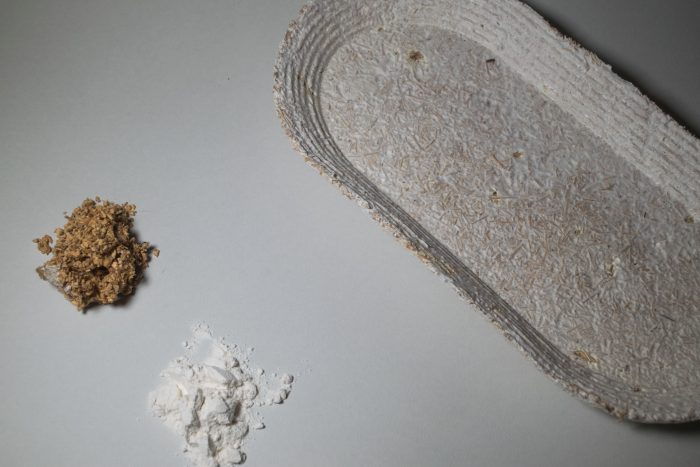
Mushroom-based compostable tray for “Compostmodern Take-Out Packaging”
7. Finally, what advice do you have for any young artists/designer starting off who wants to work towards a more sustainable future?
TK: As a young designer myself, I’m constantly searching for ways to build my portfolio, support myself financially, and make sustainable changes in the world around me. It’s often very difficult to fulfill all three of these goals without taking big risks and blind leaps of faith. The best advice I can give is to fight for what you know—and feel—is right. Fight for your passions, and try to keep calm when things don’t feel like they’re going the way you want them to. The best solutions often start with small steps that will build into something bigger. In sustainability, as well as in life, not doing the wrong thing can be just as powerful and bring you closer to doing the right thing.
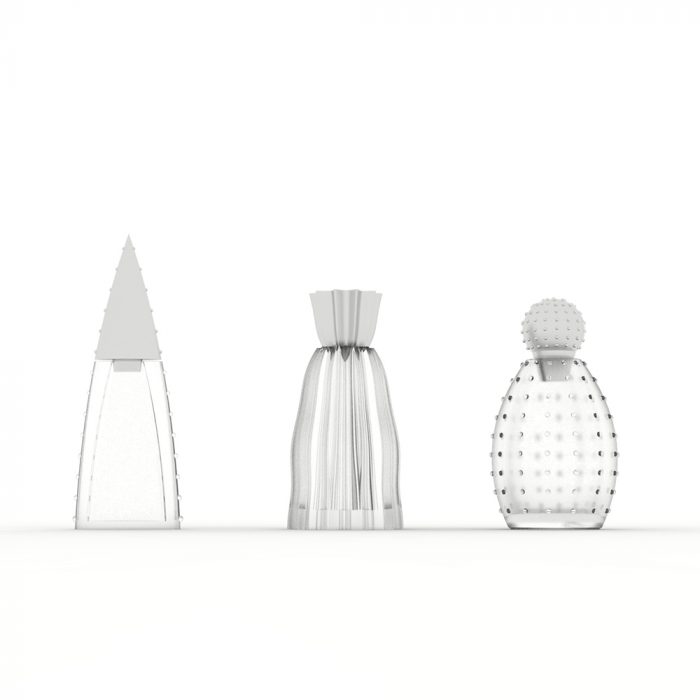
Cactus inspired perfume bottles
To learn more about the work of Guacamole Airplane, check out their social media links below!
Website: guacamoleairplane.com
Instagram: @guacamole.airplane
Author: Carola Dixon
Editor: Dena Silver